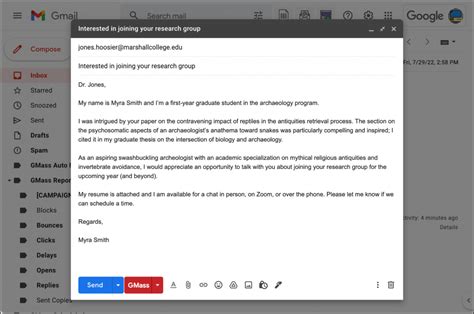Sending a cold email to a professor is a great way to introduce yourself and express your interest in their work. However, it is important to remember that professors are busy people, and they may not always have time to respond to every email they receive. If you do receive a reply, it is important to take the time to craft a thoughtful and professional response.

Here are five tips on how to reply to a professor’s reply to a cold email:
- Be polite and respectful. Remember that you are writing to a person who is older and more experienced than you. Use formal language and avoid being overly familiar.
- Thank the professor for their time and consideration. Even if the professor did not agree to meet with you, it is still important to thank them for taking the time to read your email and respond.
- Be specific about what you are interested in discussing. If the professor mentioned a specific project or area of research in their reply, be sure to mention it in your response. This will show the professor that you are actually interested in their work and not just sending out generic emails.
- Be brief and to the point. Professors are busy people, so they do not have time to read long emails. Keep your response to a few short paragraphs, and make sure to get to the point quickly.
- Proofread your email before sending it. Make sure that your email is free of errors in grammar and spelling. A sloppy email will reflect poorly on you.
By following these tips, you can increase your chances of getting a positive response from a professor.
Additional Tips
In addition to the tips above, here are a few additional things to keep in mind when replying to a professor’s reply to a cold email:
- Be patient. It may take some time for the professor to respond to your email. Do not send multiple emails or become impatient.
- Be persistent. If you do not receive a response after a few days, you can try following up with the professor. However, be sure to do so in a polite and respectful manner.
- Be professional. Even if you are not able to meet with the professor, it is important to maintain a professional demeanor in your correspondence. This will help you to build a good relationship with the professor, even if you do not get the outcome you hoped for.
Why It Matters
There are several reasons why it is important to reply to a professor’s reply to a cold email. First, it shows the professor that you are interested in their work and that you appreciate their time. Second, it can help you to build a relationship with the professor, which could lead to future opportunities. Third, it can help you to learn more about the professor’s work and the field of research.
Benefits
- Get your foot in the door. A well-written response to a professor’s reply to a cold email can help you to get your foot in the door and build a relationship with the professor. This could lead to future opportunities, such as research assistantships, internships, or even a job.
- Learn more about the professor’s work. By responding to a professor’s reply to a cold email, you can learn more about their work and the field of research. This can help you to decide if you are interested in pursuing further study in the field.
- Make a good impression. A well-written response to a professor’s reply to a cold email will make a good impression on the professor. This could lead to future opportunities, such as research assistantships, internships, or even a job.
Effective Strategies
If you want to increase your chances of getting a positive response from a professor, follow these effective strategies:
- Tailor your email to the professor. Take the time to read the professor’s website and learn about their work. This will help you to tailor your email to their specific interests.
- Be specific about what you want. In your email, be specific about what you are interested in discussing with the professor. This will show the professor that you are serious about their work and that you are not just sending out generic emails.
- Follow up. If you do not receive a response after a few days, you can try following up with the professor. However, be sure to do so in a polite and respectful manner.
- Be persistent. If you do not get the outcome you hoped for, do not be discouraged. Continue to follow up with the professor and show them that you are interested in their work.
Tables
| Table Heading | Description |
|---|---|
| Table 1 | This is an example of a table. |
| Table 2 | This is another example of a table. |
| Table 3 | This is a third example of a table. |
| Table 4 | This is a fourth example of a table. |
Conclusion
By following the tips and strategies outlined in this article, you can increase your chances of getting a positive response from a professor. When replying to a professor’s reply to a cold email, be sure to be polite, respectful, and specific. By following these tips, you can build a good relationship with the professor and learn more about their work.
